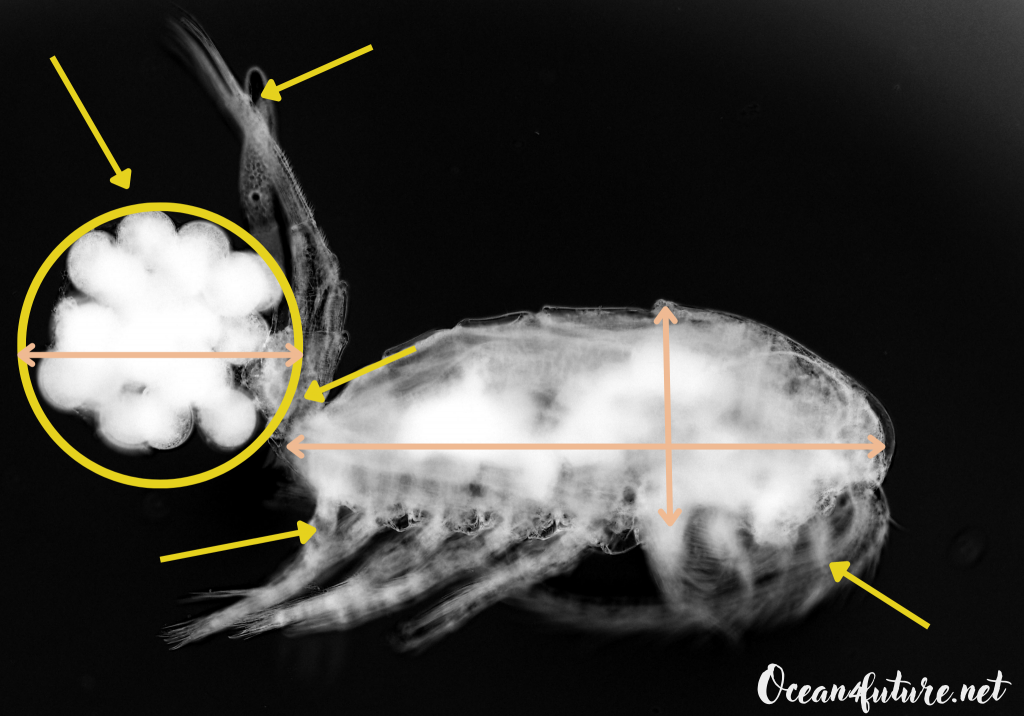Research projects: Copepods are sentinel species
Copepods are among the most abundant multicellular organisms on earth and they are present in all aquatic ecosystems. They are small crustaceans that can be free living or parasite. For free living copepods they play a key role at the lwoer trophic levels. For planktonic copepods, living in the water column, they are adapted to live in a highly variable and turbulent environment. During several millions of years of evolution, calanoid copepods (see an example of the photo on the right column) developped a typical morphology with large antenna composed of a series of sophisticated mecano- and chemo-receptors. At their small scale (mm to cm), they are very active swimmers with a high jumping capacity. They are a real sophisticated and accurate living biosensors capable of sensing their physical and chemical enviroment. Sami Souissi and his collaborators contributed significantly to promote the use of copepod swimming behaviour to detect the effects of different polutants (i.e., heavy metals, organic pollutants, toxines, nanomaterials and microplastics).
In freshwater ecosystems the motion of zooplankton, mainly the water flea Daphnia a very known model for toxicity, is used in a commercial monitoring device called Daphtox. However in both marine and brackish water ecosystems copepods are better candiodates to develop biological models in ecotoxicology (see the book chapter by Kwok et al. 2012 here).
Use of copepod swimming behaviour to assess the water quality.
Example of a typical calanoid copepod with large antenna containing several mechano- et chemoreceptors.

Use of copepod life traits and morphology to develop new indicators of the health of the ecosystem at different scales. Sami Souissi and his collaborators developped a set of new indicators based on a deep imagery analysis and expert visual examination of the morphology and reproductive output of the copepod Eurytemora affinis.
These studies allowed to discover a subtile reproductive strategy in this copepod when facing global warming scenario (see recent paper in Nature Scientific Reports), and identify intersexual individuals in copepods as well as other abnormalities.
The change in morphology and fitness of the copepod was also combined to study experimentally the effect of global warming scenario (see here).
Recently a methodology to promote the development of sentinel specie sin the water column based on the use of body size and and fecundity was suggested (see here).
Photo showing a lateral view of an ovigerous female (carrying an egg-sac) of the estuarine copepod Eurytemora affinis. The arows indicate the main traits that can be used to develop bioindicators of water quality and globally the health of the ecosystem.

